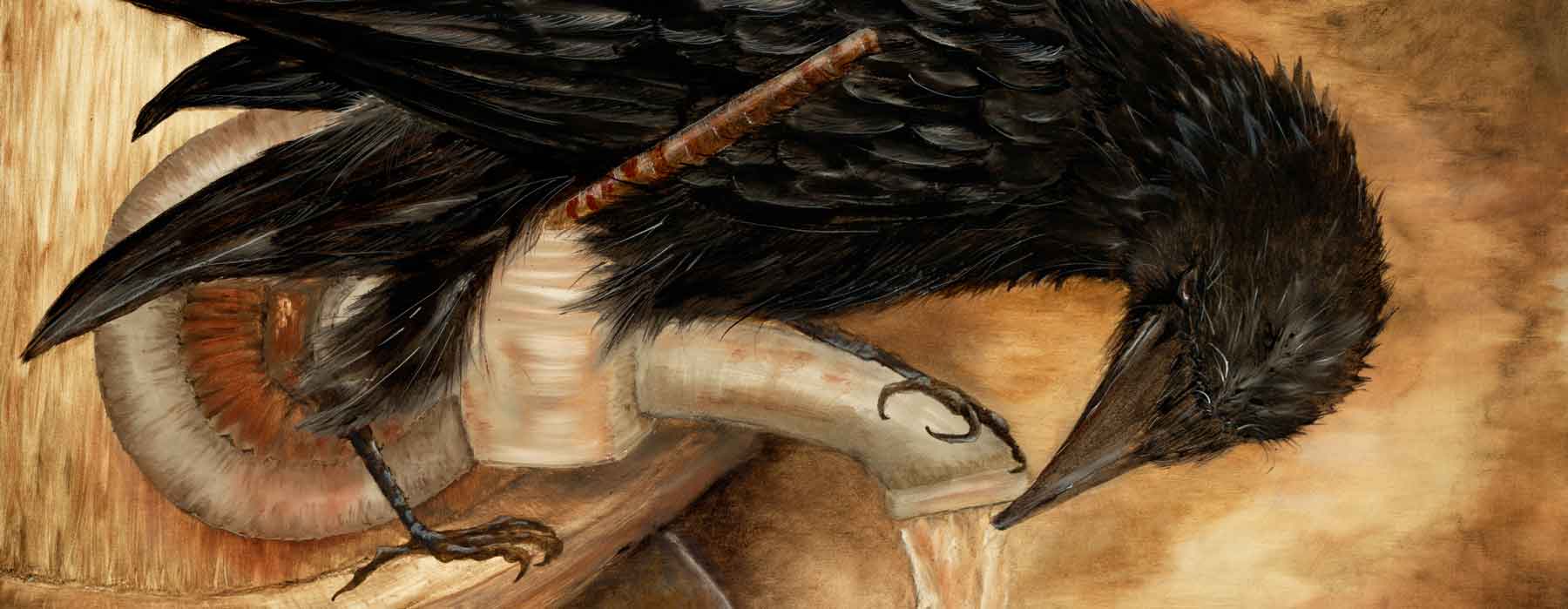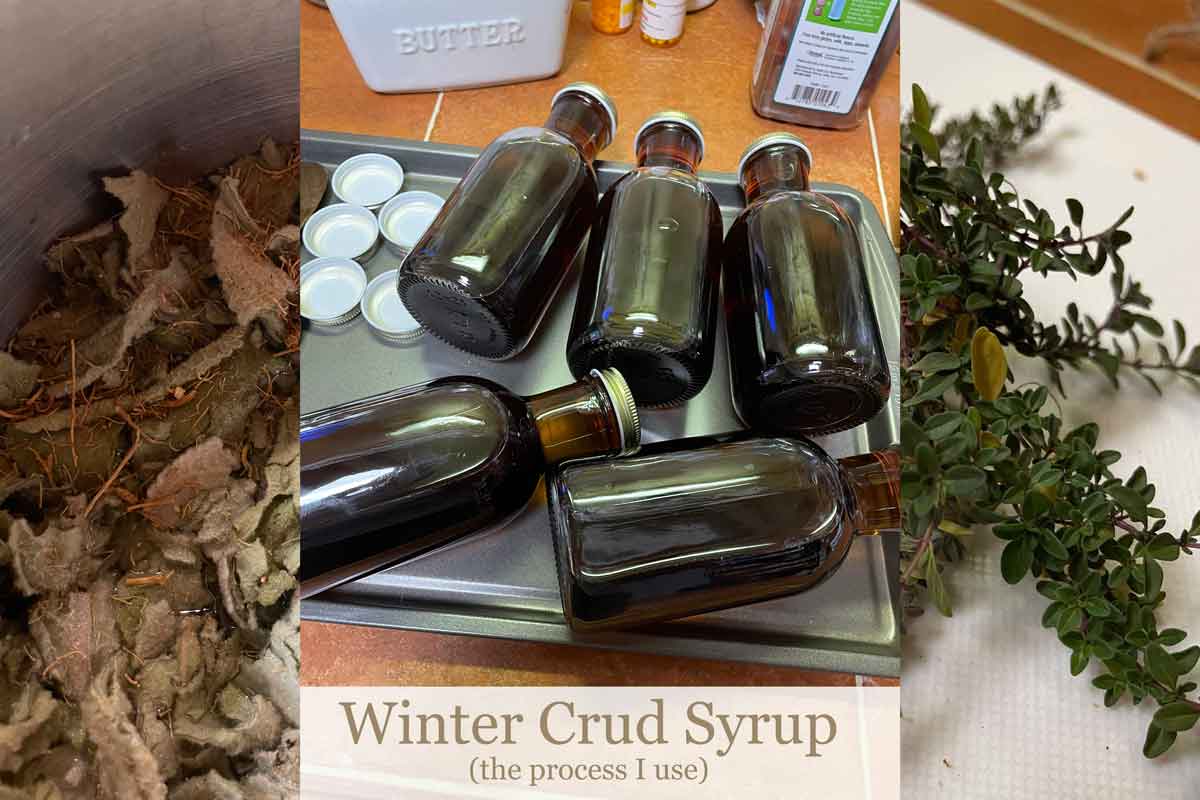Here’s my 2023 recipe for an herbal remedy I use every year to combat what we’ve come to call “Winter Crud”. We also take it at the first sign of anything that feels like trouble coming on.
This year’s formula uses mullein (Thapsus verbascum), echinacea purpurea, thyme (Thymus vulgaris), American ginseng (Panax quinquefolium), stone mint (Cunilla oreganoides), and beebalm (Monarda fistulosa). I’ll update and repost this every year to tell you which herb’s I’m using and whether I’ve changed anything about how I’m making it.
- 2 cups final decoction
- 4 cups sugar
- heat to 160F
- bottle and cap (or put in jars)
Ugh. Winter Crud
I’m sure there’s a real name for it, but I don’t know what it is, because we generally don’t go to the doctor for issues like this. It could be any of the myriad of upper respiratory infections common during the winter months. We just call it the “winter crud” or “creeping crud” or “that *bleeping* cough that lingers forever”.
I don’t usually go to the doctor because I’m worried that there might be even more serious ailments lurking inside the office waiting room than the one currently plaguing me. So I generally rely on my trusty herbal allies unless it’s acute or serious.
The symptoms are always the same: deep congestion that’s hard to cough up, sometimes a low fever for a day or two at the beginning, and a few weeks of long-lingering congested cough.
Inevitably someone in the family gets it. Usually the whole household gets it. And so I like to have it ready to go. Most years I make extra for Christmas gifts, and this year is no exception.
My reservations
Generally I don’t blog much about my herbal remedies because it feels like slippery ground when it comes to sharing that information outside my own little network of like-minded family and friends. But I’ve really had great results with this one and thought I’d share.
Please make sure you research these herbs to find out if they’re suitable for you and your conditions. Just the sugar alone is enough to send a diabetic into crisis.
I am not a doctor and am not prescribing or advising you to try this remedy. I’m just sharing how I make it and what I use it for. If you want me to make some for you, though, I will do that when I have enough of the herbs on hand to do so, or when I’ve made enough to have bottles from my own batch to spare.
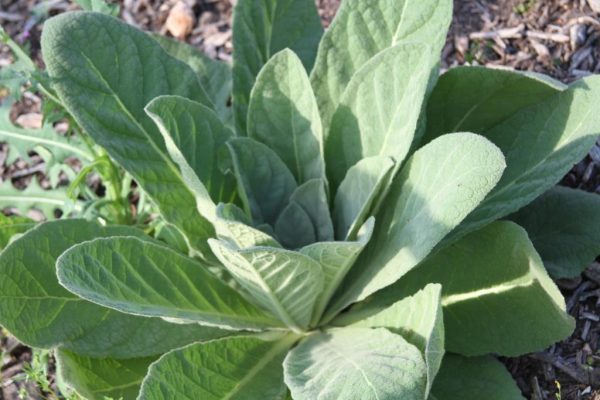
References
Here’s some information about the herbs I used this year.
- Thyme: https://www.sciencedirect.com/topics/agricultural-and-biological-sciences/thymus-vulgaris
- Stone mint: https://nadiasyard.com/our-native-plants/american-dittany-cunila-origanoides-magic-in-this-medicine/
- Beebalm: https://theherbalacademy.com/benefits-of-bee-balm-monarda-fistulosa-and-m-didyma/
- Echinacea: https://www.ncbi.nlm.nih.gov/pmc/articles/PMC7121736/
- American ginseng: https://www.ncbi.nlm.nih.gov/pmc/articles/PMC6567205/
- Mullein: https://www.sciencedirect.com/science/article/abs/pii/S0378874102001861
The Ingredients
The precise list of ingredients I use for anything at all changes according to what I managed to gather the summer and fall before.
Today’s ingredient list for this year’s Winter Crud syrup features mullein (Thapsus verbascum), echinacea purpurea, thyme (Thymus vulgaris), American ginseng (Panax quinquefolium), stone mint (Cunilla oreganoides), and beebalm (Monarda fistulosa).
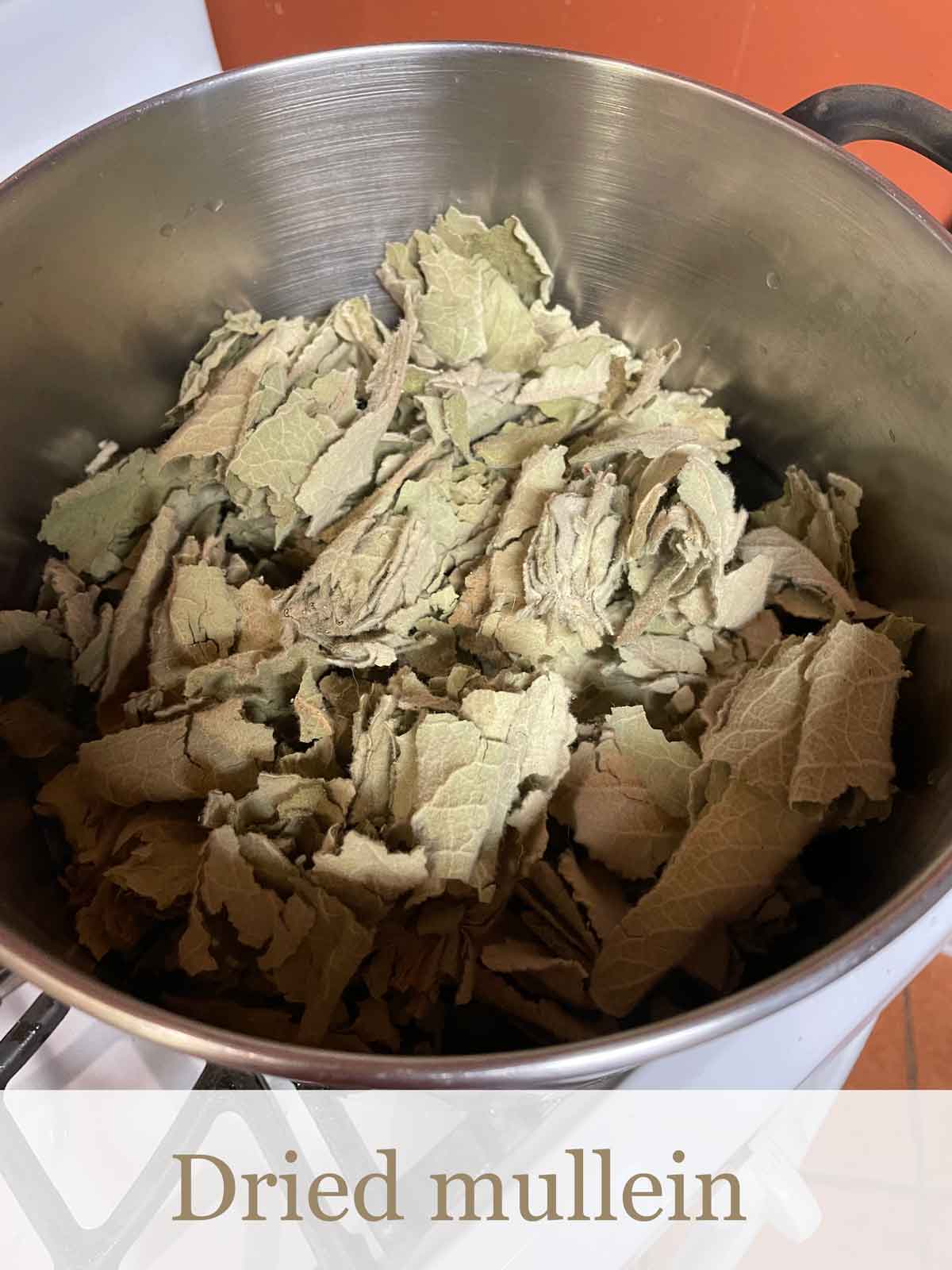
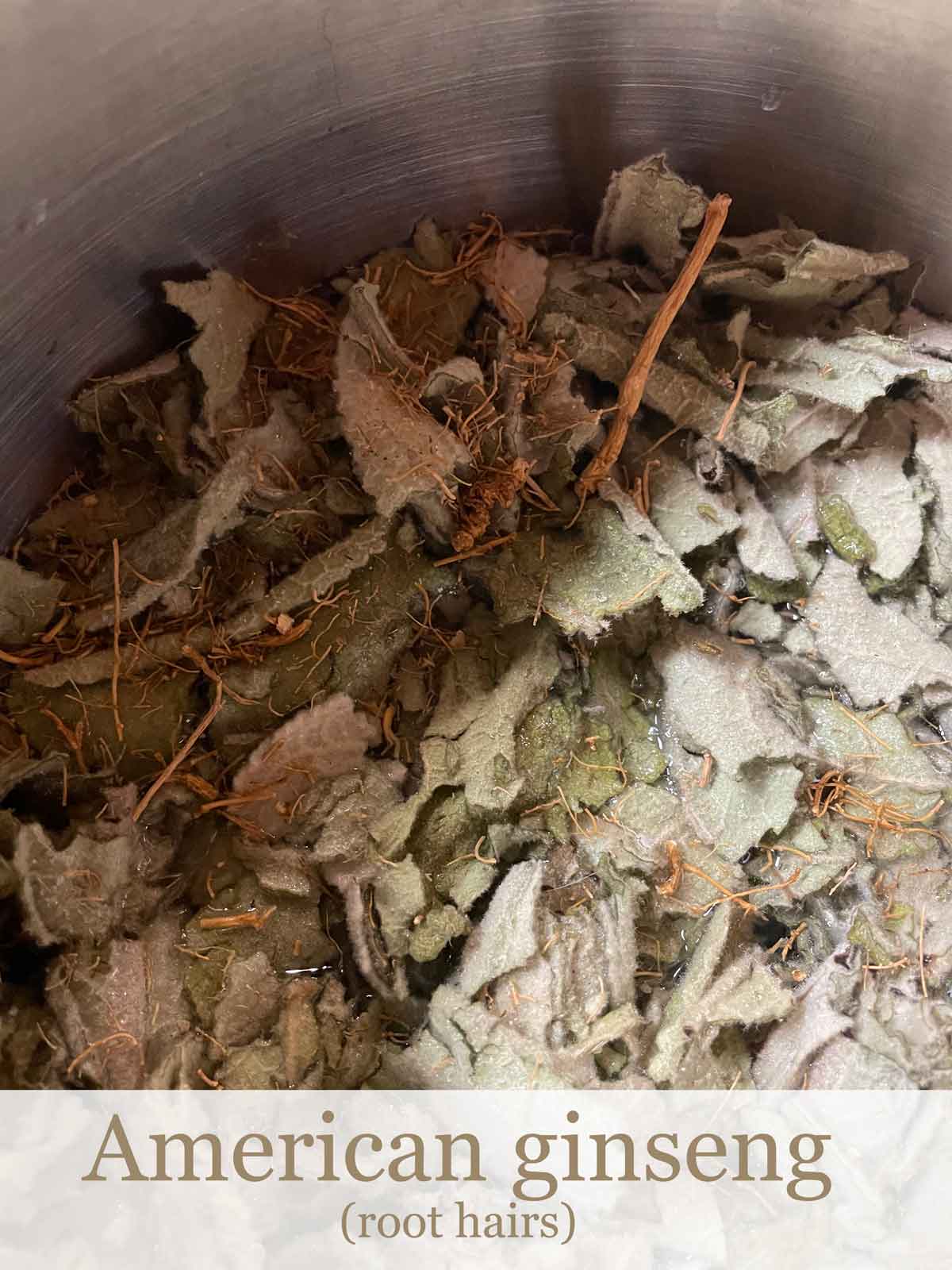
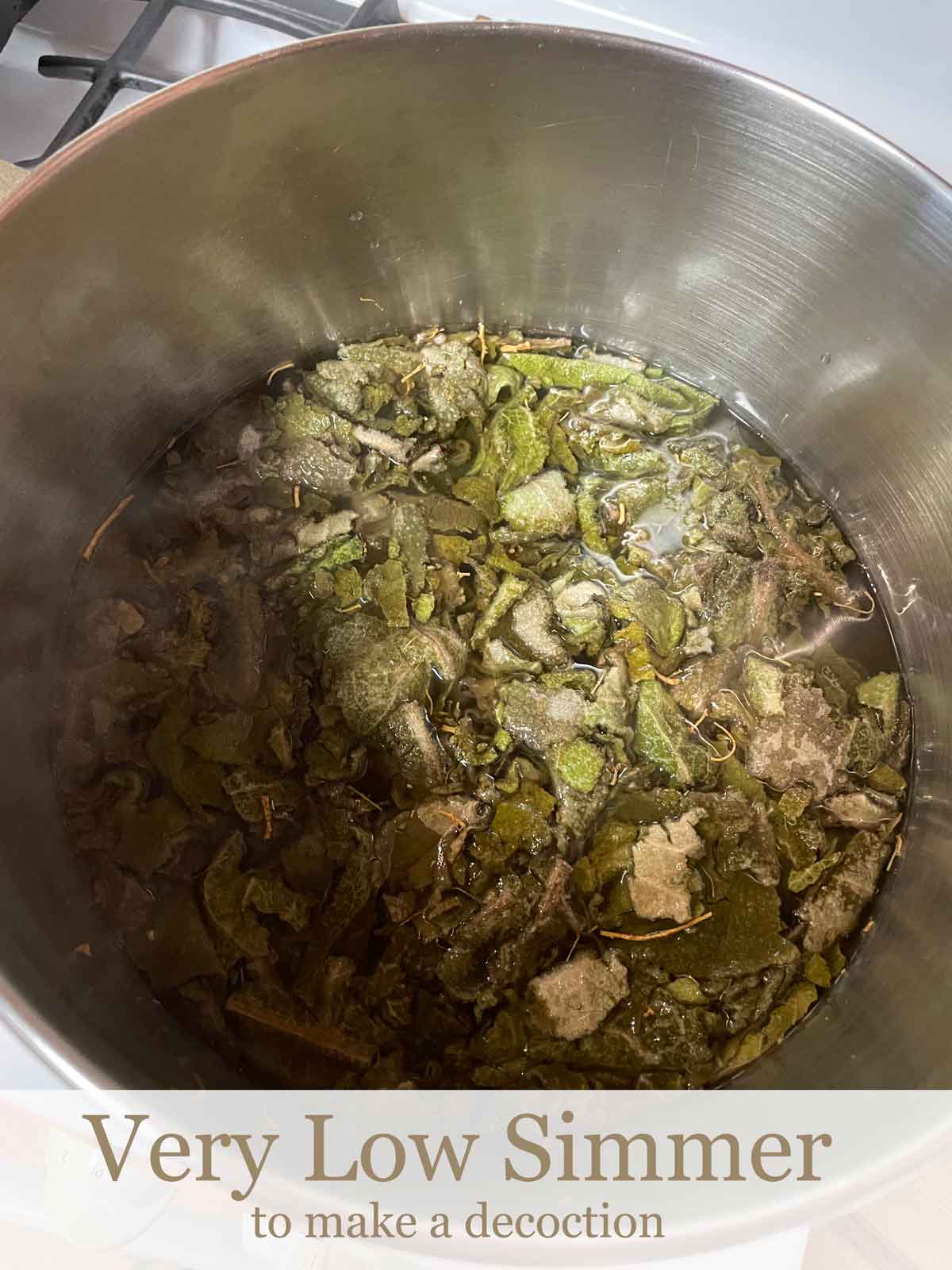
After the mullein and ginseng root have simmered long enough to reduce volume by half, add the other herbs and more water enough to cover them.
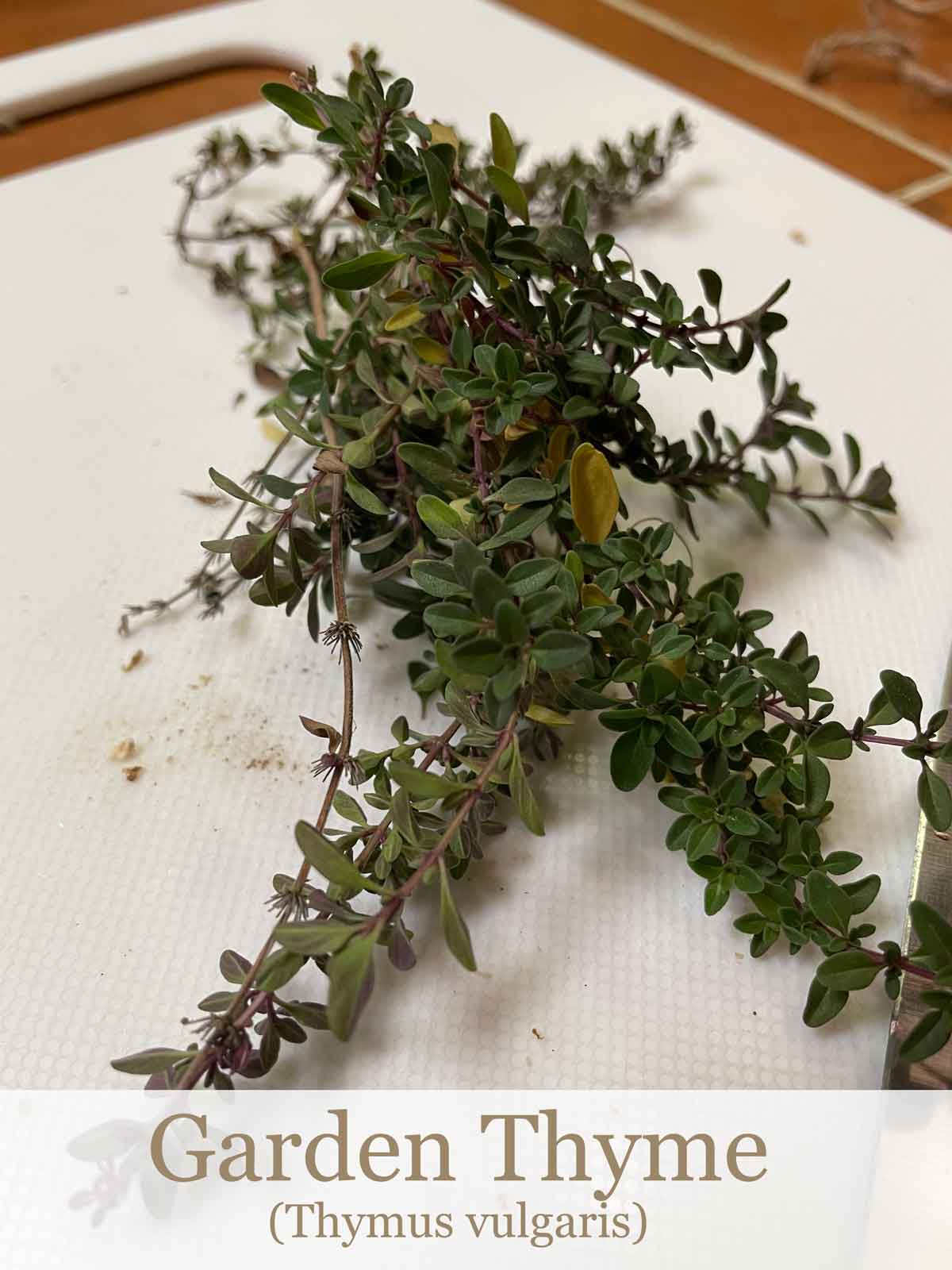
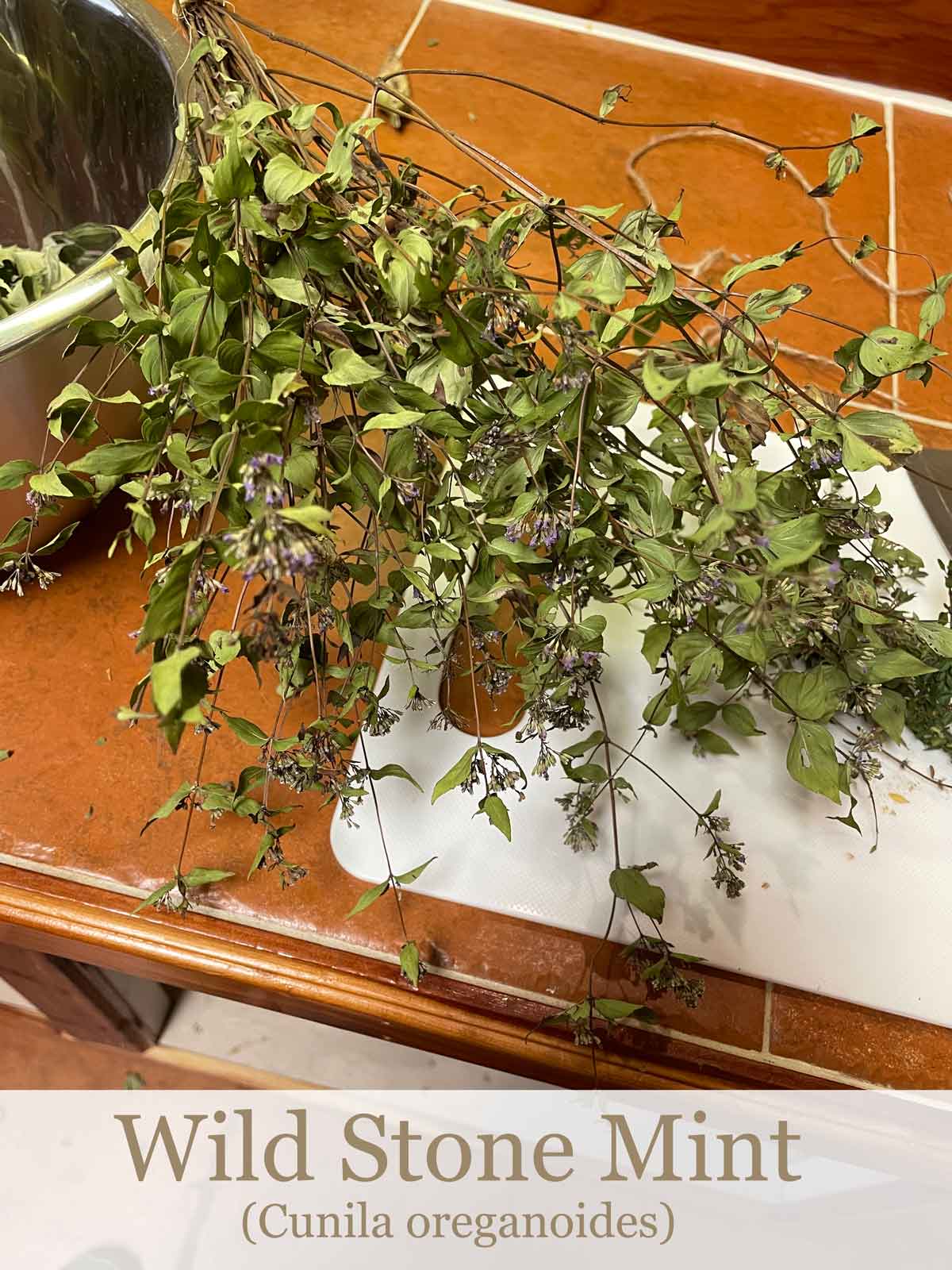
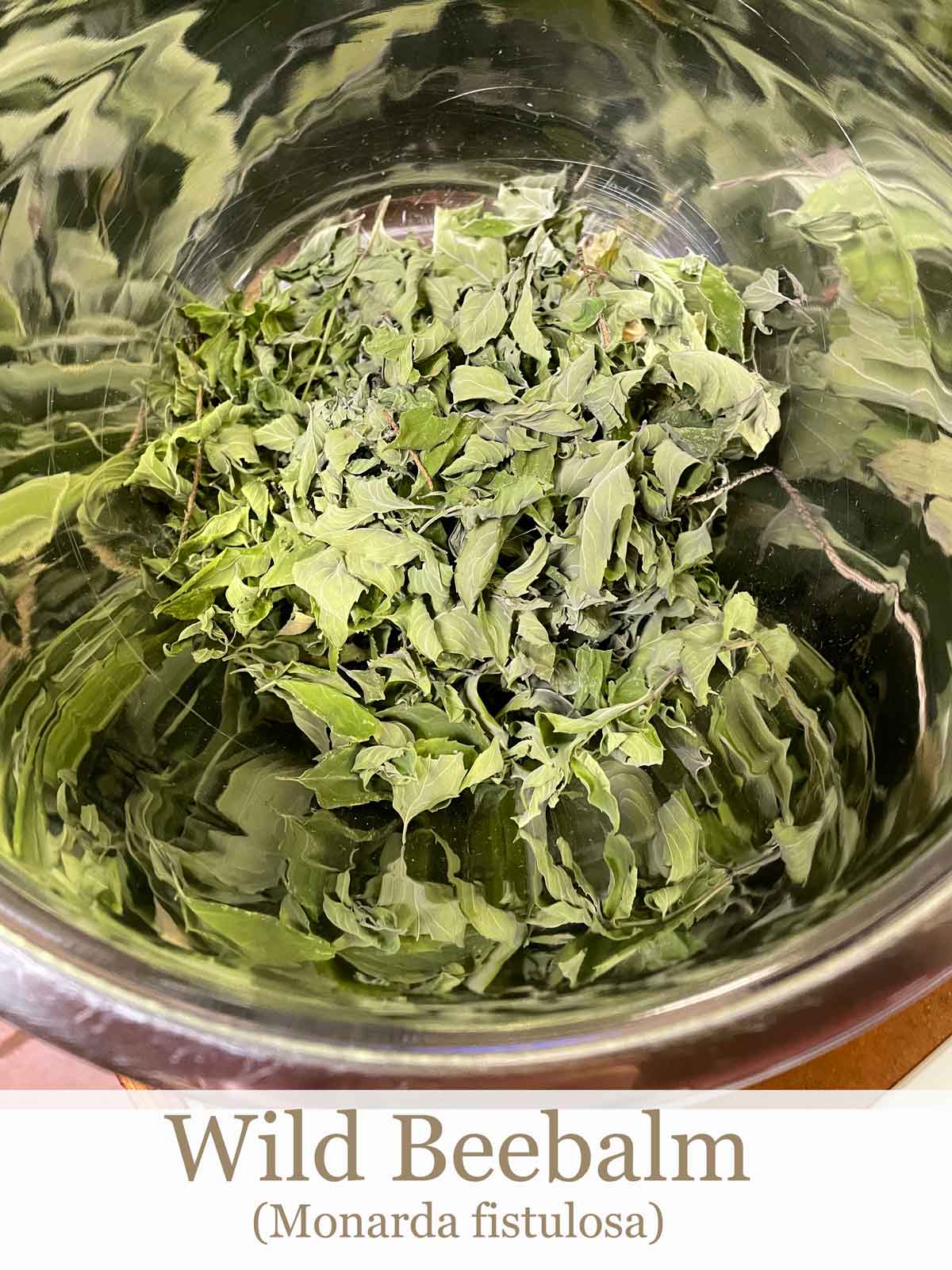
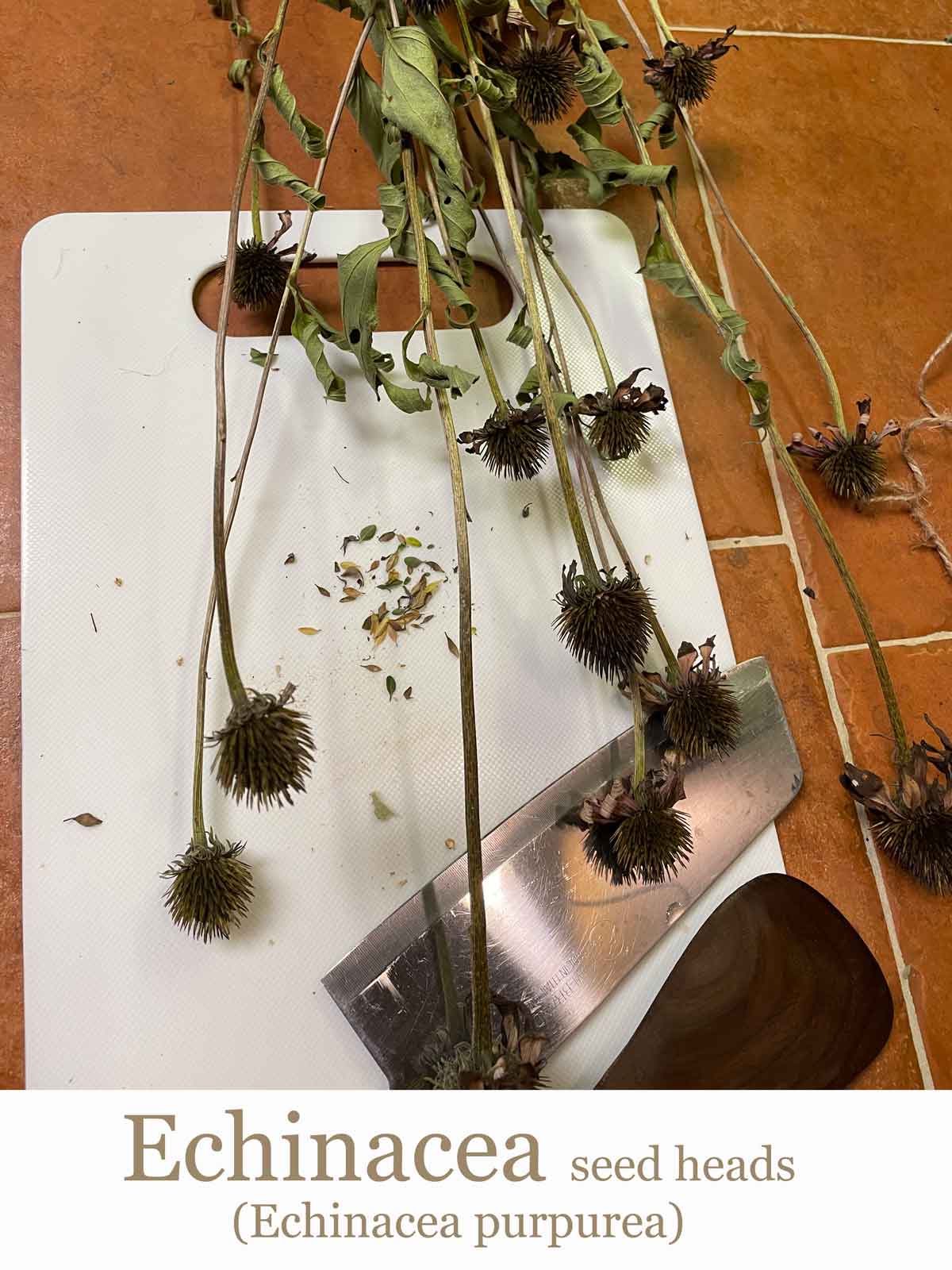
Once the extraction process is done (you’re extracting the properties of the plants into the water, which will be used to make the syrup), strain the plant matter out of the water.
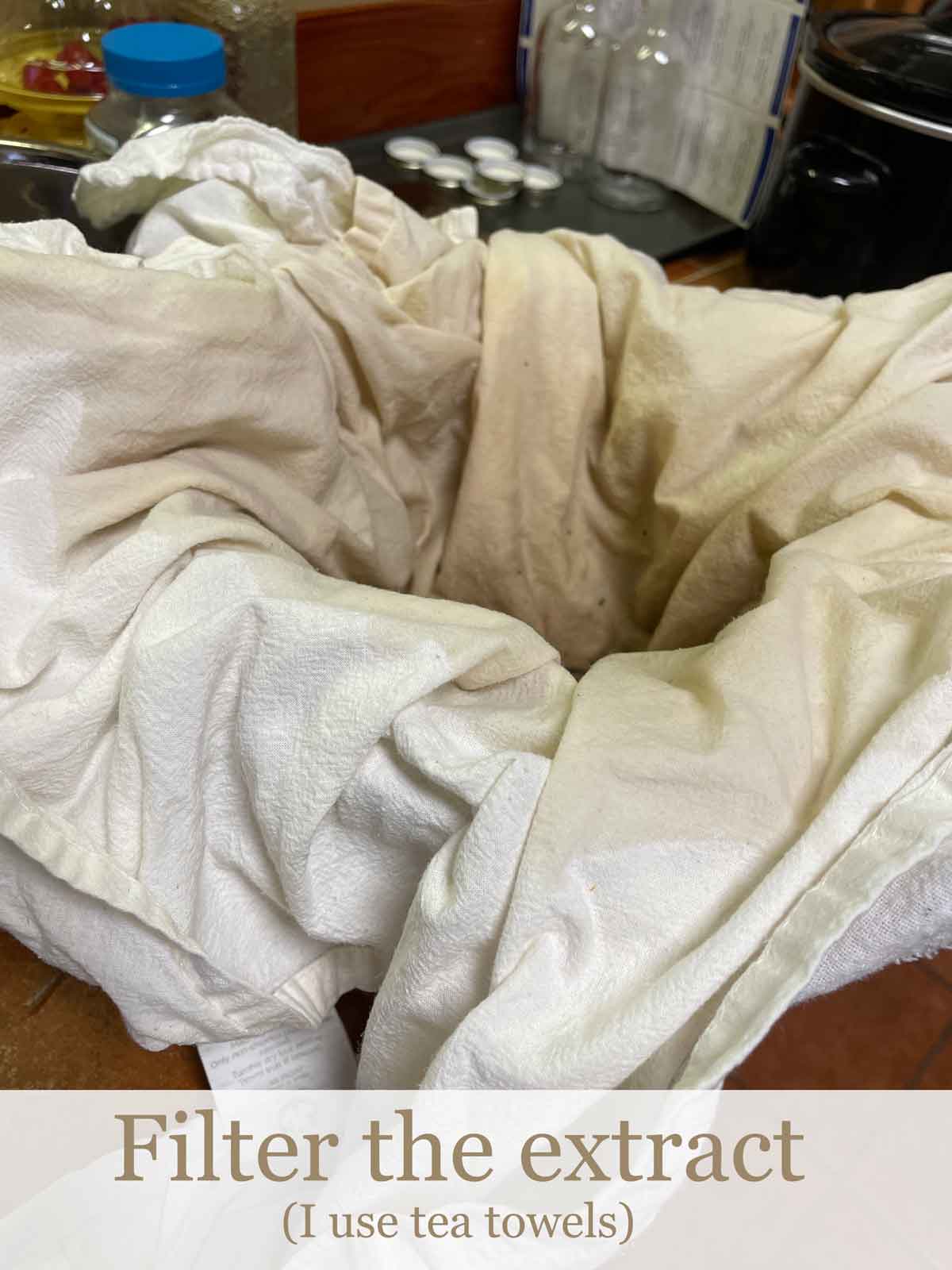
Then put the pot back on the stove and reduce until the volume is what you’re wanting to use to make the syrup. The ratio of sugar to liquid is 2:1. So I’m aiming for 4 cups of liquid and I’ll use 8 cups of sugar.
Bottling Winter Crud Syrup
Once you’ve added your liquid and sugar back to the pot (that you rinsed after straining the liquid), stir and heat the syrup to 160*F. After you’ve poured a few bottles, cap and lay the bottles on the side so that the caps seal. Put the pot back on the fire to maintain the heat while you do this.
Once all of your bottles are filled, let them cool. Clean off any syrup spills on the outside and then label the syrup.
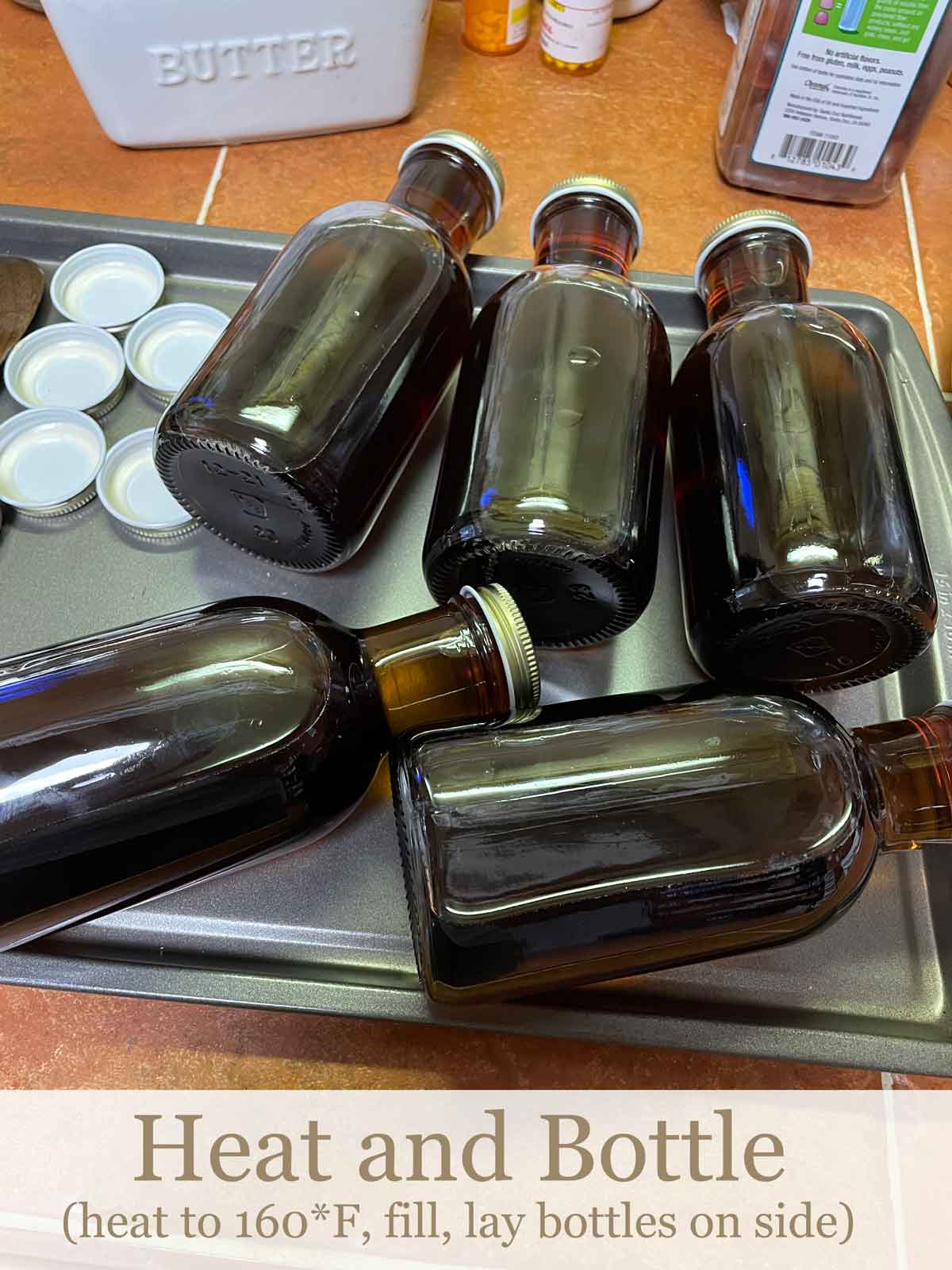
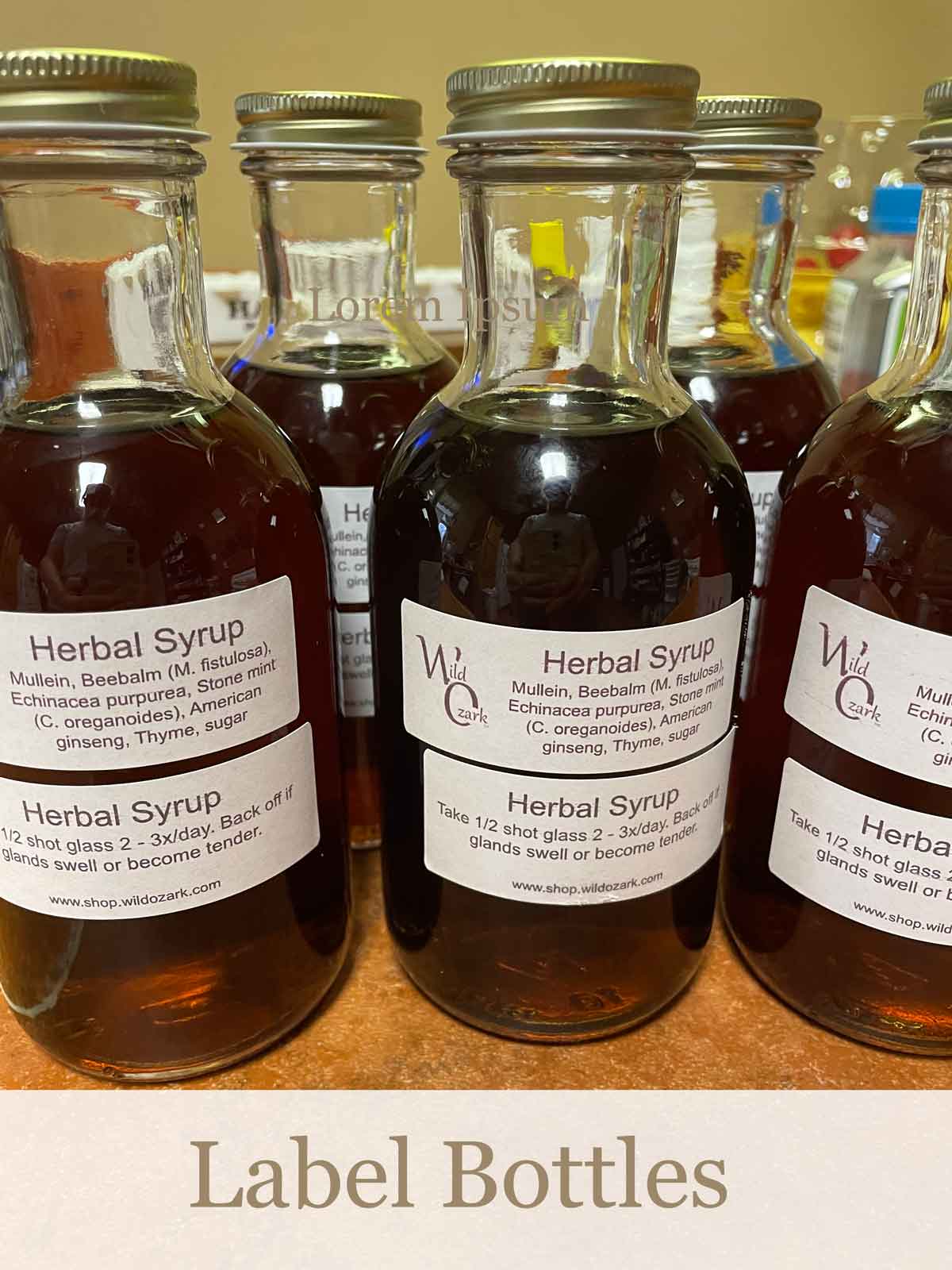
Wildcrafting
All of the herbs were responsibly foraged from right here at Wild Ozark, from either on the land or in my garden. I never take more than a small percentage of the plant from a colony, even in the garden. When taking flowers, I always leave half behind for the pollinators. There is no shortage of mullein anywhere so I am less concerned with conservation of that herb.
The Most Important Ingredient
The syrup must have mullein for it to be useful for this remedy at all, and thankfully mullein is easily found almost all year long here. I think the beebalm and ginseng also add a lot to the effectiveness. But if all I had was mullein, I’d go with it. And if sugar is an issue for you, it works just as well as a decoction alone. You’ll have to use it within a few days because the sugar is a preservative. It just won’t taste as good, but it’s a tolerable flavor.
Whatever you do, however it’s prepared, be sure to filter out the fine hairs from the mullein. I pour the decoction through two layers of cloth. And make sure you’ve correctly identified any of the herbs you use. Also RESEARCH to make sure none of these herbs have properties that will interfere with any other of your medications or conditions.
I give instructions on how to make a decoction in my book 10 Common Plants Worth Knowing, but that one is for witch hazel tonic. Here’s a procedure for the mullein decoction recipe you can download. It’s in PDF format. Just save it to your hard-drive or print it out. It doesn’t matter if you’re using different herbs, it’s the same process regardless.
I’d love it if you’d “pin” it to Pinterest for me:
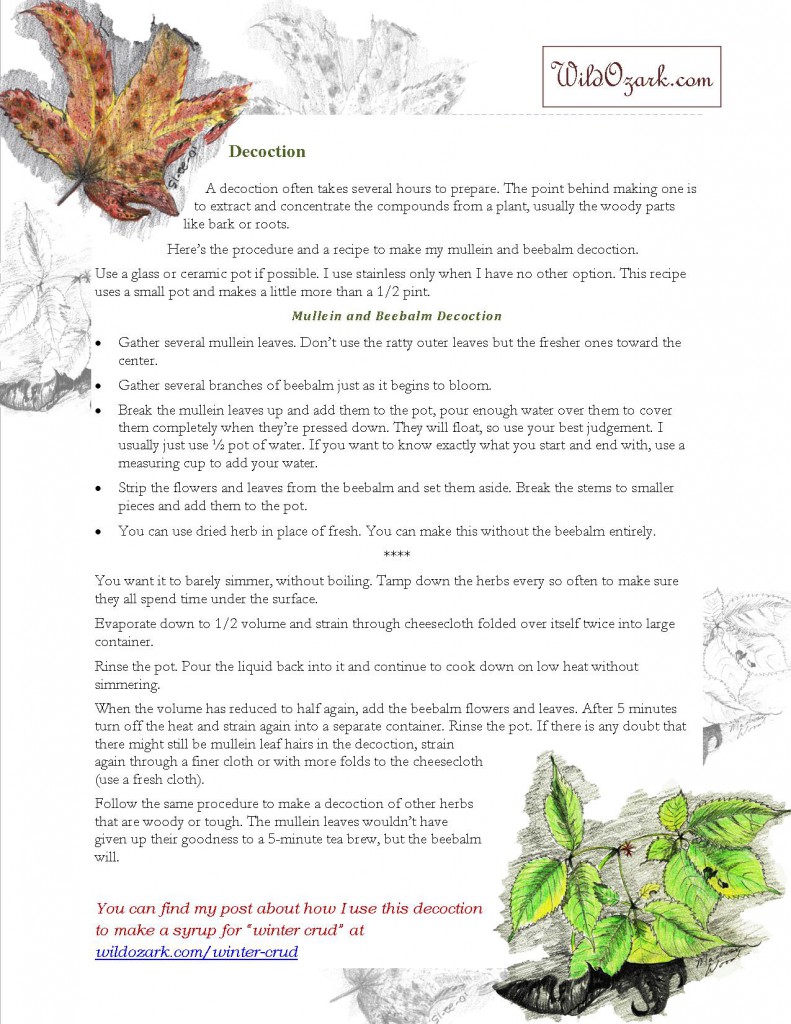
Mullein needs to be strained more thoroughly than most other herbs because of the hairs on the leaves. Make the decoction first with the woody or tough parts of the plants you’ll be using. Set the more tender things aside until after the decoction is made. Then add the leafy parts of herbs in the last phase of making the decoction, just before the final reduction.
DIY?
You could make it yourself and it’s a great project to do so. If you try it and need to ask questions just email me. If you don’t have the ingredients or don’t want to spend a day stirring the cauldron, you can buy a bottle from me (when available). A link to my shop listing will be displayed below when I have any to sell.
Unfortunately, I won’t have extra bottles to sell for 2023. Next year I’ll try to make a bigger harvest of the plants I need.
Contact Mad Rox: (479) 409-3429 or madison@madisonwoods and let me know which hat I need to put on 🙂 Madison for art, Roxann for real estate, lol. Or call me Mad Rox and have them both covered!
***
Author/Artist Info
________________________________
Roxann Riedel is a salesperson for Montgomery Whiteley Realty, artist, owner of the only ginseng nursery in Arkansas, and the author of books and this website. Madison Woods is the pen-name she uses for her creative works. She’s a self-taught artist who moved to the Ozarks from south Louisiana in 2005. Her paintings of the Ozark-inspired scenes feature lightfast pigments from Madison county, Arkansas. Her inspiration is nature – the beauty, and the inherent cycle of life and death, destruction and regeneration. Wild Ozark is also the only licensed ginseng nursery in Arkansas. Here’s the link for more information on the nursery
There’s always a discount for paintings on the easel 😉
Online Portfolio
Click here to join her mailing list.
LIKE & SUBSCRIBE ON YOUTUBE
https://www.youtube.com/@wildozark

